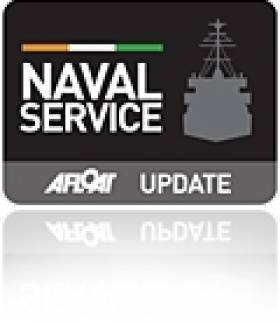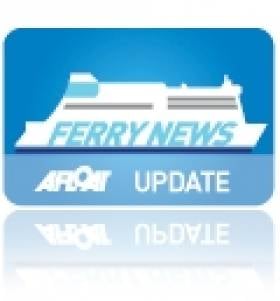Displaying items by tag: Roches Point Lighthouse
Naval Service Detain Irish Trawler off Roches Point
#FISHERY DETENTION – An Irish registered fishing vessel was detained by the Naval Service OPV L.É. Aoife (P23) today some 60 miles south-east of Roches Point, Co. Cork.
The detention was in relation to alleged under-recording of catch and other alleged breaches of fishing regulations. Currently the L.É. Aoife is escorting the detained vessel which is expected to berth alongside Cobh later this evening and handed over to the Gardaí.
So far this year, the Naval Service has carried out 1014 inspections, issued 36 vessel warnings for 42 infringements detected and detained 15 vessels for 39 detected infringements.
Brittany Ferries 'Flagship' Sets Sail for Summer Season
#FERRY TO FRANCE – Brittany Ferries flagship Cork-Roscoff route is underway, as the first sailing in 2012 of the seasonal-only operated service started last weekend and runs to early November. Serving on the 14 hour route which is the shortest sailing to France, is the luxurious flagship Pont-Aven, writes Jehan Ashmore.
The 2,400 passenger /650 vehicle capacity Pont-Aven is unique to Irish services as she features a swimming pool. The indoor facility located on the top deck, includes a leisure area and pool bar which is open during the summer season and on busy off-season crossings.
In addition there are restaurants, a piano bar, main lounge, café and shop facilities. She has a wide choice of cabin accommodation that includes 'Commodore' cabins complete with balconies. For details about sailing schedules click HERE.
Roscoff is set in picturesque surroundings on the north-west Breton coast and the ferryport is a short distance even by foot to the town which has restaurants facing the coast. There is a botanical garden and a century-old thalassotherapy that has seawater and seaweed treatments used for healing and relaxation therapies.

























































